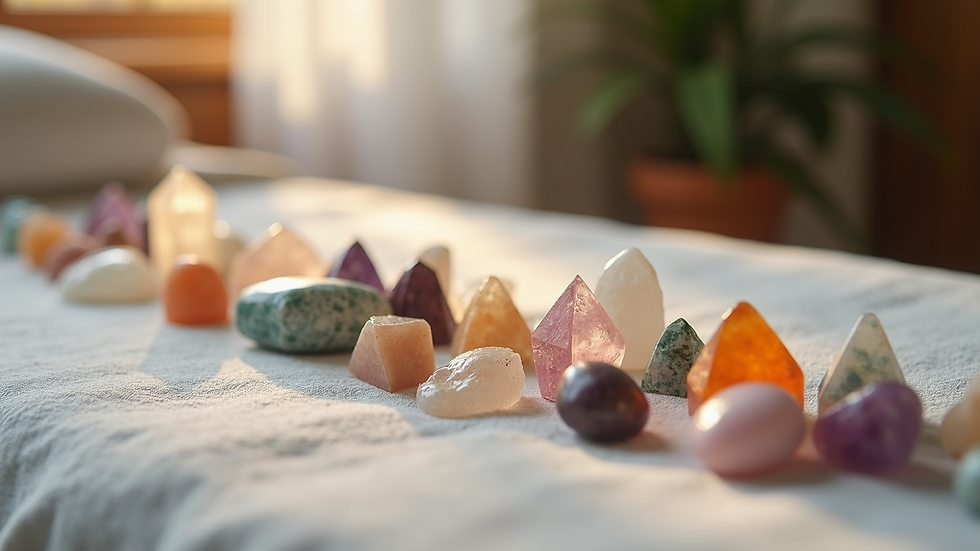What to Expect When Enrolling in Massage Training
- Alyra Beaumont

- Oct 13
- 3 min read
Embarking on massage training is an exciting step for those already immersed in holistic therapies such as yoga, sound therapy, or shamanic practices. This journey not only deepens your understanding of the body but also equips you with practical skills to support others in their healing process. Whether you are a cancer survivor, a farmer seeking natural wellness methods, or someone passionate about spiritual development, massage training offers a unique blend of science, art, and intuition.
Understanding the Foundations of Massage Training
Massage training begins with a solid foundation in anatomy and physiology. This knowledge is crucial because it helps you understand how muscles, bones, and the nervous system interact. You will learn about different muscle groups, how they function, and how massage can influence them to promote healing and relaxation.
Training also covers various massage techniques, from Swedish and deep tissue to more specialised methods like lymphatic drainage or reflexology. Each technique has its own purpose and benefits, and you will practice these hands-on to develop confidence and precision.
Practical sessions are often paired with theory classes, where you explore the history of massage, ethical considerations, and client communication skills. This holistic approach ensures you are well-prepared to work professionally and compassionately.

What to Expect During Massage Training
Massage training is both physically and mentally engaging. Expect to spend a significant amount of time practicing on classmates or volunteers, which helps you refine your touch and technique. This hands-on experience is invaluable and often the most rewarding part of the course.
You will also be introduced to client assessment methods. Learning how to listen to clients’ needs, understand their health history, and tailor your massage accordingly is a key skill. This personalised approach enhances the effectiveness of your treatments.
Courses typically include modules on hygiene and safety, ensuring you maintain a clean and safe environment for your clients. You will learn about contraindications - situations where massage might not be advisable - and how to recognise them.
Many training programmes encourage self-care practices for therapists. Massage can be physically demanding, so learning how to protect your own body through posture, stretching, and rest is essential.

Which Course is Best for a Massage Therapist?
Choosing the right course depends on your goals, schedule, and prior experience. For those already qualified in holistic therapies, a course that integrates complementary techniques might be ideal. Look for programmes that offer a balance of theory, practical skills, and business training.
Accreditation is important. Ensure the course is recognised by professional bodies, which can enhance your credibility and help with insurance and client trust.
Some courses focus on specific massage styles, while others provide a broad overview. If you want to specialise, consider advanced training after completing a general course.
Flexibility is another factor. Many providers offer part-time, weekend, or online options to fit around your existing commitments.
For example, the massage therapy courses available through The NWO offer a comprehensive curriculum designed for holistic therapists ready to expand their skills.

Integrating Massage into Your Holistic Practice
Once trained, massage can be a powerful addition to your existing holistic therapies. It complements yoga by helping clients release tension and improve flexibility. For sound therapy or shamanic healing, massage can ground and balance the body, enhancing the overall experience.
Building a client base may involve offering introductory sessions or workshops to showcase your new skills. Networking with other therapists and participating in community events can also increase your visibility.
Consider joining a therapist directory or advertising on platforms that cater to holistic wellness seekers. This can attract clients who value natural and integrative approaches.
Offering massage sessions as part of a spiritual development group or wellness circle can create a supportive environment for healing and growth. This approach aligns well with the values of many natural therapy clients.
Preparing for a Career in Massage Therapy
Massage therapy is not just a skill but a vocation that requires ongoing learning and self-awareness. After completing your training, consider continuing education to stay updated with new techniques and research.
Developing good business practices is equally important. This includes managing appointments, maintaining client records, and understanding legal requirements such as insurance and consent forms.
Self-promotion through social media, a professional website, or local advertising can help attract clients. Sharing testimonials and success stories builds trust and credibility.
Joining a community of therapists, such as a weekly radio show or a spiritual development group, can provide support and inspiration. These connections often lead to referrals and collaborative opportunities.
Massage training opens doors to a fulfilling career that supports both your clients’ wellbeing and your personal growth. Embrace the journey with curiosity and compassion, and you will find it deeply rewarding.
.png)







Comments